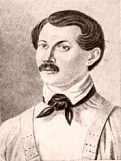...
It is unnecessary to say that Mr. Adams deals with the art of the
Middle Ages after this fashion: he is not of those who would
determine every element in art from its material antecedents. He
realizes very fully that its essential element, the thing that
differentiates it from the art that preceded and that which
followed, is its spiritual impulse; the manifestation may have been,
and probably was, more or less accidental, but that which makes
Chartres Cathedral and its glass, the sculptures of Rheims, the Dies
Irae, Aucassin and Nicolette, the Song of Roland, the Arthurian
Legends, great art and unique, is neither their technical mastery
nor their fidelity to the enduring laws of all great art,--though
these are singular in their perfection,--but rather the peculiar
spiritual impulse which informed the time, and by its intensity, its
penetrating power, and its dynamic force wrought a rounded and
complete civilization and manifested this through a thousand varied
channels.
Greater, perhaps, even than his grasp of the singular entirety of
mediaeval civilization, is Mr. Adams's power of merging himself in a
long dead time, of thinking and feeling with the men and women
thereof, and so breathing on the dead bones of antiquity that again
they clothe themselves with flesh and vesture, call back their
severed souls, and live again, not only to the consciousness of the
reader, but before his very eyes. And it is not a thin simulacrum he
raises by some doubtful alchemy: it is no phantasm of the past that
shines dimly before us in these magical pages; it is the very time
itself in which we are merged...
|


